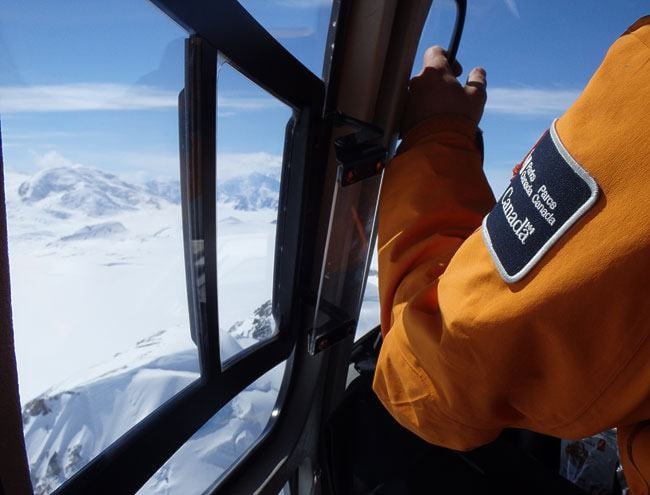As three experienced climbers tried to make their way down from Canada’s highest peak, the wind was so strong they could barely move.
Dramatic and dangerous weather is one of the risks that come with being more than 17,000 feet off the ground on Yukon’s Mount Logan.
That’s where three experienced climbers found themselves before they were rescued last week on the summit plateau in Kluane National Park and Reserve.
The two Canadians and one American, all between 40 and 60 years old, estimated winds of more than 160 km/hour.
“Those type of wind conditions pinned them down. Like literally, they couldn’t crawl more than 100 metres at one time because the winds were on the cusp of blowing them off the mountain,” said Craig McKinnon, resource conservation manager with Kluane National Park and Reserve.
“Them finding a crevasse and building a snow cave out of it is really ultimately what saved their lives.”
The trio are all experienced when it comes to this kind of climbing. One has made it up Everest six times, McKinnon said.
The climbers successfully made it up Mount Logan on June 2 via the East Ridge and were on their descent down the King’s Trench Route when the weather rolled in, according to Parks Canada.
The group called for help around 1 a.m. on June 9. The bad weather meant rescuers couldn’t get to the climbers right away, but they were in regular contact.
All three men were experiencing the kind of fatigue and weakness that can come from being in those high altitudes, McKinnon said. One climber had severe frostbite on his fingers and less severe frostbite on his face.
The heights also made things more difficult for the rescuers sent in to get them. “Basically, anything about 10,000 feet is considered risky,” McKinnon said.
“At 17,000 feet on Mount Logan, like I said the whole plateau is above that, jet planes are not that much higher than you.”
Helicopters need to work harder to stay aloft in the thin air found at high altitudes. Pilots must wear oxygen anytime their helicopters are above 10,000 feet.
When the weather cleared up on June 11, more than two days after the call for help, rescuers were sent in.
Two Kluane National Park Visitor Safety staff and a certified rescue pilot flew a helicopter from Haines Junction to Mount Logan on a Trans North helicopter.
A second rescue team specializing in high-altitude rescues came from Denali National Park as a backup, but it turns out they weren’t needed.
The experience of the climbers in this case really helped, McKinnon said.
“Talking with them during the whole rescue, over the days, they helped us monitor their vital signs, their health, they were very professional about it and quite calm about it.”
Everyone was safely back on the ground in Haines Junction by 10:30 p.m.
Mount Logan is Canada’s highest mountain at 19,551 feet (5,959 metres.) About 50 climbers try to summit the mountain every year.
Contact Ashley Joannou at
ashleyj@yukon-news.com
